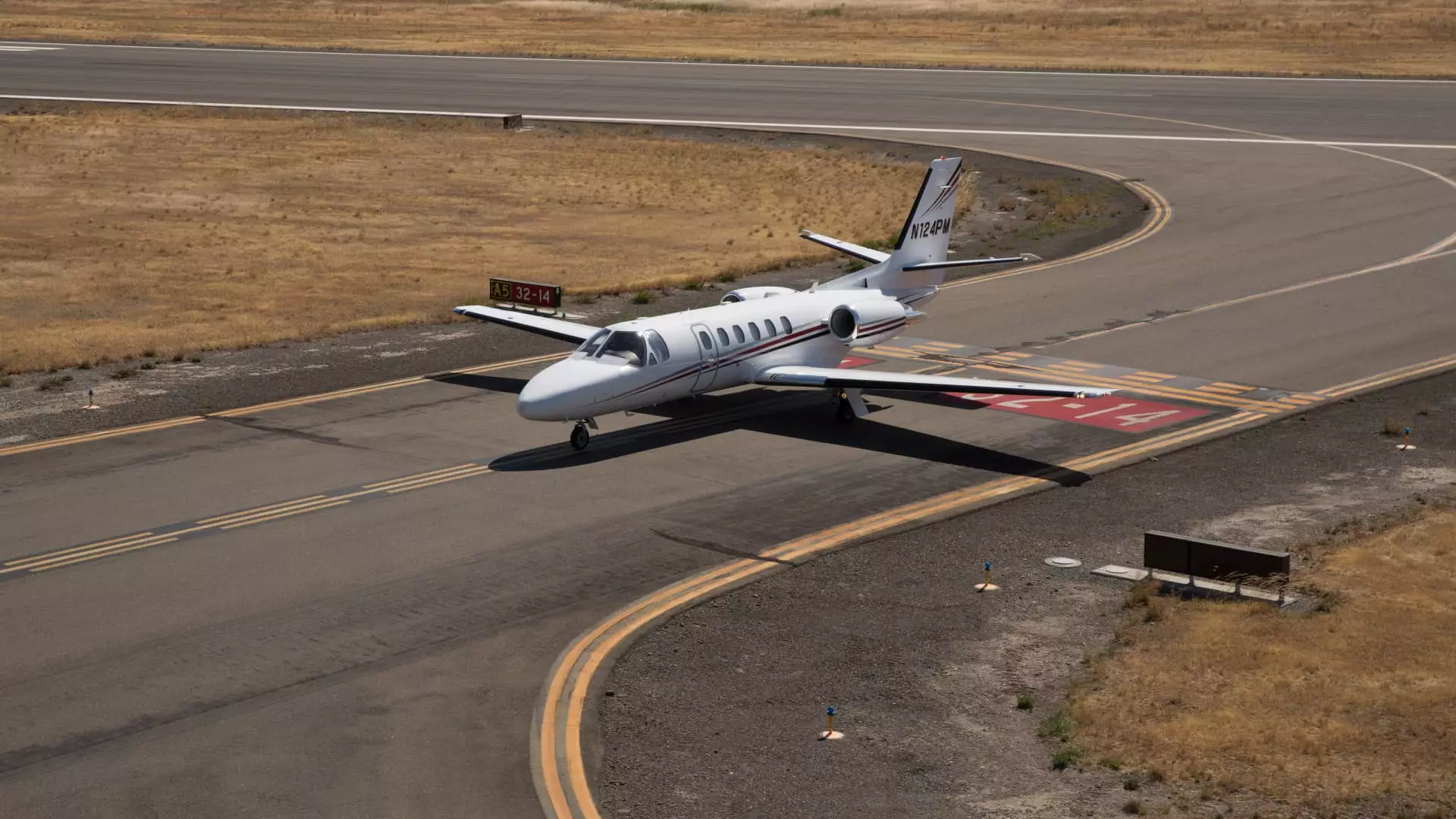As consumer confidence continues to plummet, the repercussions are being acutely felt within the commercial aviation sector, particularly among luxury travel enthusiasts. A recent survey conducted by Barclays reveals a staggering 49% decrease in interest among potential buyers of business jets, offering a sobering glimpse into the minds of today’s affluent consumers. It seems that even those with deep pockets are hesitating to invest in business jets as they reevaluate their spending habits in light of fluctuating economic conditions.
This dramatic shift emerges from the Barclays Business Jet Indicator survey, which gathered insights from 65 industry professionals between April 9 and 15. The results echo a broader sentiment of uncertainty that pervades the market. The overall composite score of the survey—the key gauge of market health—plummeted from a stable 52 to a concerning 40. This denotes a chilling 23% drop, the steepest decline since the onset of the COVID-19 pandemic, signaling that financial unease has seeped into even the most financially robust segments of the market.
Indicators of a Market in Distress
A composite score in the low 40s, while alarming, should not come as a surprise. It indicates sluggish market conditions where the demand for new aircraft is trailing significantly behind current production capacities. In practical terms, manufacturers are struggling with a book-to-bill ratio that reflects financial pressures and potentially spells doom for a once-thriving industry. David Strauss, a Barclays analyst, reflected on this dramatic downturn, expressing his surprise that the erosion of sentiment had been so acute.
What’s fueling this decline? Fear of economic ramifications, particularly surrounding tariffs, is a significant concern. Nearly half of the survey respondents stated they’ve witnessed a marked decline in customer enthusiasm since March, as potential jet owners grapple with the ramifications of an evolving legislative landscape that puts their investments at risk. A staggering 93% of respondents expressed concerns over the negative impact of tariffs on demand—an overwhelming majority anticipating that what was once a buoyant market is now teetering on the edge of disaster.
A Duality of Sentiment: New vs. Used Jets
Shifting perspectives on new versus used jets further complicate the narrative. While the new aircraft market is sagging, remnants of optimism swirl around used jets, albeit faintly. Only 27% of survey participants believe that demand for pre-owned jets might experience a boost. Conversely, 67% remain pessimistic about the future, expecting at least a minor decline in demand as economic uncertainties loom large.
The hijacking of consumer confidence, particularly among high-net-worth buyers, signifies not just an economic slowdown but also a psychological shift among potential buyers. When the affluent pull back on spending, the ramifications resonate throughout the entire industry—manufacturers, brokers, and financiers alike feel the tremors of this reticence.
A Glimmer of Hope? Legislative Changes on the Horizon
However, amid this gloom, there’s a flicker of hope on the horizon. Legislative movements signal a potential lifeline for the struggling business jet market. Recent budget resolution measures adopted by both the Senate and House could roll back diminishing tax benefits that have adversely affected equipment purchases. The proposed provisions aim to restore immediate tax deductions for capital investments, potentially reinvigorating demand for new jets. If successful, this policy shift could reverse the crippling cycle of decline and stimulate new interest within a beleaguered market.
Republican lawmakers are seeking to restore the favorable 100% deduction rate implemented under the Tax Cuts and Jobs Act, a measure many believe could reignite investment interest in business jets. This beckons the question: will such a move prove sufficient to counteract the broader economic anxieties swirling around the industry?
In the world of high-stakes commercial aviation, the impacts of consumer sentiment are immense, yet the forces shaping this delicate landscape have also never been more dynamic. How the market responds to these changes could very well dictate the trajectory of business jet demand moving forward.

Leave a Reply